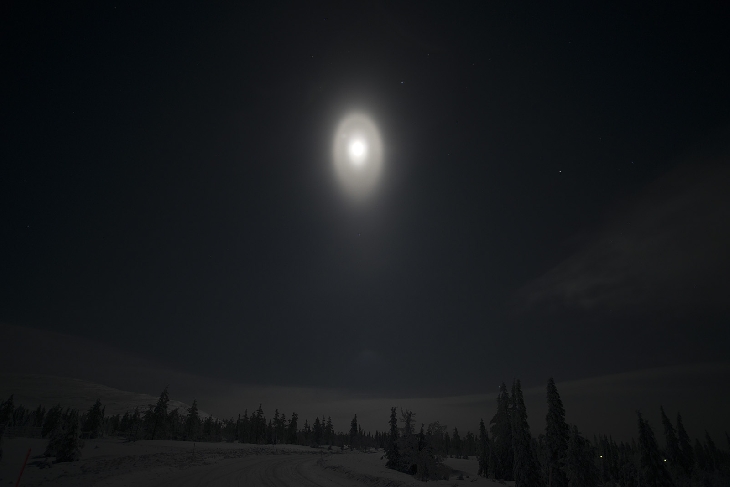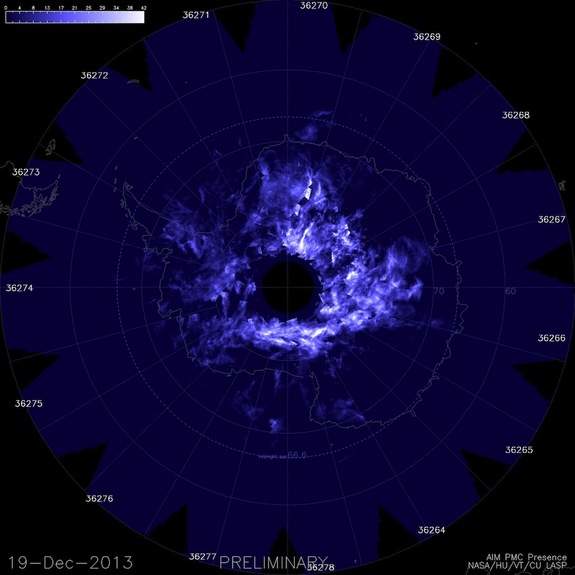Luminous halos around the Moon are nothing unusual, especially in wintertime Finland where the air is so often filled with ice. Crystals of frozen H
2O catch the moonlight and bend it into a
circular ring of light. A few nights ago, however, Sauli Koski of Muonio, Finland, witnessed a halo that was not circular, but elliptical:

© Sauli Koski
"On Jan. 15th, the weather changed. As the temperature dropped from -7C to -37C, there were all kinds of ice halos to photograph," says Koski. "The best and rarest were these elliptical forms that lasted more than 20 minutes."
Although physicists have been studying
ice halos for decades, not all are understood. "
Elliptical halos are one of the puzzles," says atmospheric optics expert Les Cowley. " We can
simulate them by invoking hexagonal plate-like crystals topped by almost flat pyramid faces. However, the simulations do not fit very well and such crystals are unphysical. Crystal facets like to form along planes where there are lots of atoms or molecules - almost flat pyramids do not fit the bill at all. Perhaps some peculiar distorted snowflake types instead?"
"These mysteries all add to the spice of halo observing, the beautiful, the unexpected, the unexplained, something new!"

Comment: NASA is blowing more 'meteor-smoke' in our eyes!
After acknowledging that NLCs are increasing due to the increased extraterrestrial factor, NASA then tries to blame rising methane levels from below, suggesting that human industrial activity is responsible for both.
This is a rather pathetic attempt to blame NLCs on 'man-made global warming'!
Rising methane levels are due to methane being released from deep under the oceans.
Increased NLCs are a 'canary in a coal mine' alright, but not in the way Official Science would have us believe.
Since Official Science won't spell it out for people, it's left to citizen observers to do so: